What is the Difference Between a Temple and a Shrine?
2024/03/17
It is not uncommon for visitors to Japan to have some confusion around the difference between the places referred to as “temples” and “shrines” here. For those not acquainted with Japanese culture, it can be quite perplexing to try and figure out the lines that separate these highly ubiquitous locations in Japanese society. A simple explanation is that what is usually translated as a “temple” in English refers to a Buddhist place of worship, and the word “shrine” refers to a place associated with the indigenous faith of Shinto (“the way of the gods”). However, when you start to travel and explore such locations, you may notice that there are in fact Shinto structures found inside of Buddhist temple complexes, or sometimes Buddhist statues (or perhaps Shinto torii gates) out in the open with no temple or shrine complex in sight. “What’s going there?” You may have asked yourself. Well, let’s take a quick look at some of the fundamentals of the fascinating framework of religion & spirituality in Japan so that you can hopefully better understand the places you explore on your journeys here (and hopefully with us!).
(Note: this blog is not meant to be a intended to be an over-encompassing explanation of the complex concepts covered here – merely just helpful!)
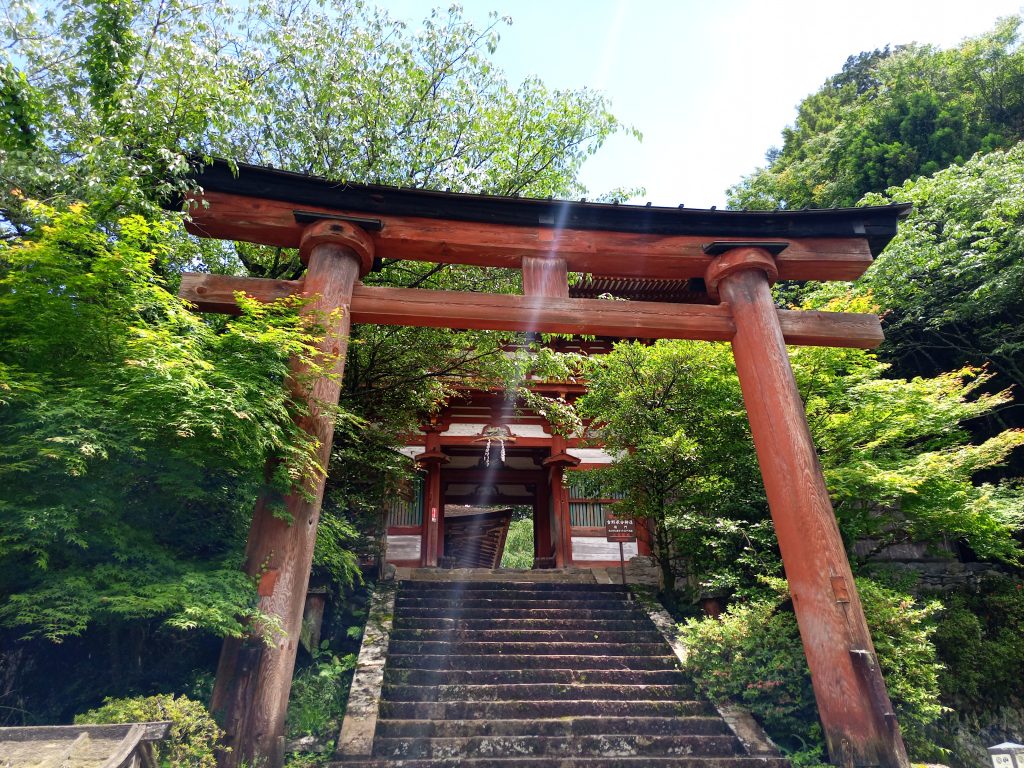
Yoshino Mikumari Shrine in Yoshino Town
Shinto generally refers to an ancient and varied system of beliefs centered around worshiping gods known as “kami” that inhabit locations, exist in things, or are considered the things themselves. Examples of where you could find a kami include natural features such as waterfalls, trees, or something made by a human (a classic example being the katana). It is believed that recognizing and worshiping the kami (who have various different “powers”) through places like shrines can grant us humans their aid in various ways, or at the very least, create relationships that can help ward off disaster. Shinto’s exact origins are unclear but is generally considered indigenous to the islands of Japan, predating historical records and probably connected with what can be called ancient shamanistic practices involving nature worship. Taoist aspects are also apparent, hinting at influences from China and Korea, which would not be surprising given the long historical periods of exchange between Japan and the continent – and the fact that they were, long ago, geographically connected. Nonetheless, the origins of what is now called Shinto are ancient and murky, probably out-of-reach today – and tantalizing for all these reasons.*
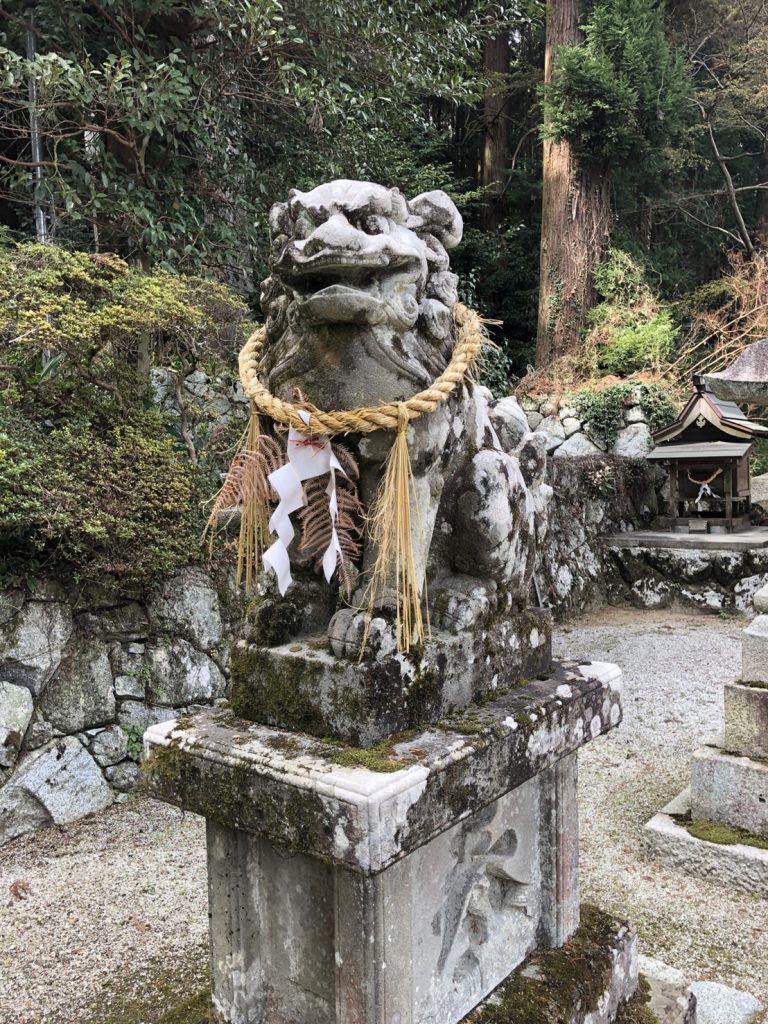
A komainu or “lion-dog” guardian deity that originated in China, and is now a common sight at Shinto shrines in Japan.
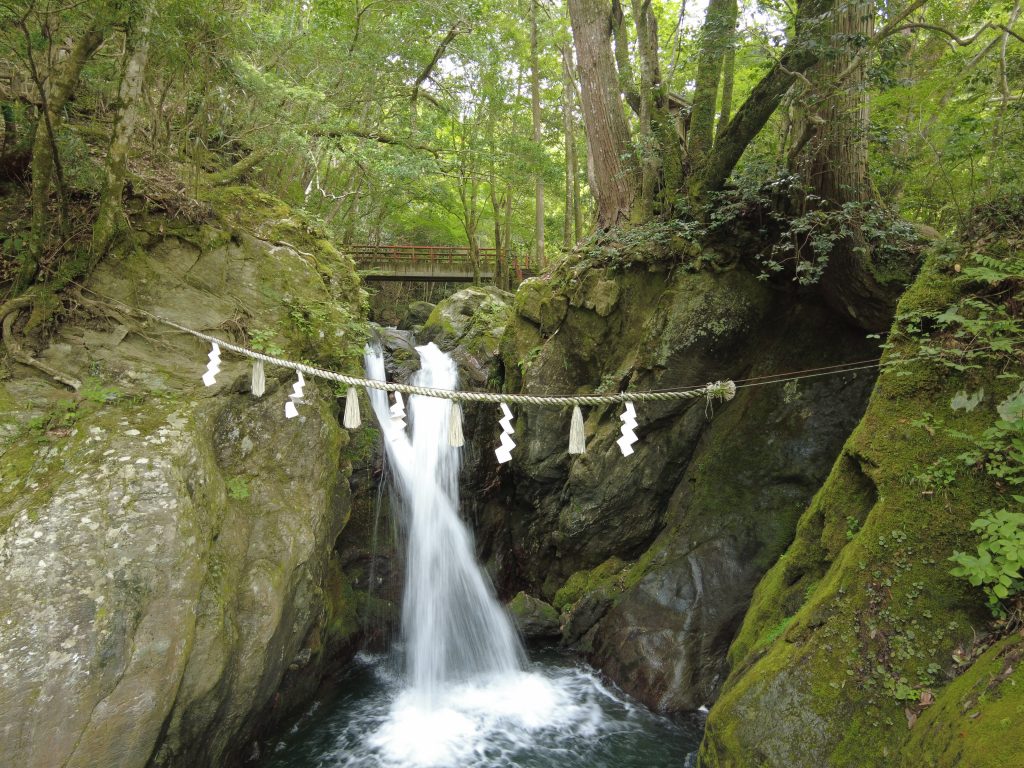
A waterfall with a shimenawa rope across it, marking it as a sacred space.
Some of the oldest and most important shrines include the Omiwa Shrine of Nara Prefecture(where Mt. Miwa is worshiped directly as the body of the kami), Izumo Taisha in Shimane Prefecture, and the Grand Ise shrine of Mie Prefecture. There are tens of thousands of different kami enshrined throughout the Japanese archipelago, many of which may not have any particular name associated with them. Simple signs of a kami’s believed existence in a location can be a shimenawa rope (around a tree, stone, and so on) or a small torii gate.
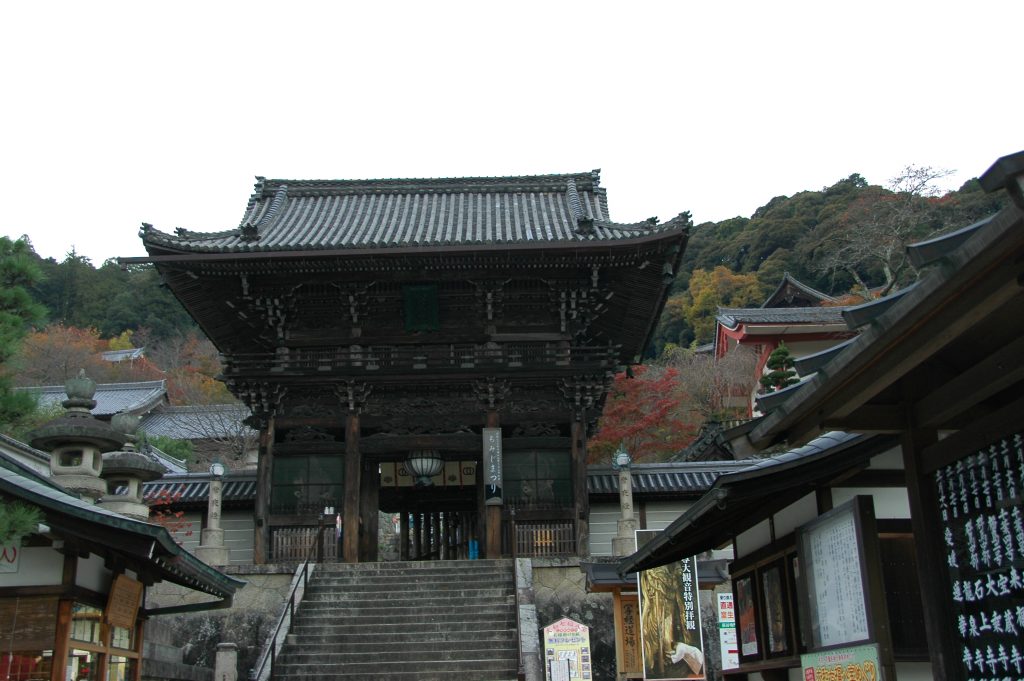
Entrance gate to Hase-dera Temple, Sakurai City.
Likely first introduced to Japan through Korea during the 6th century, Buddhism was adopted by leaders among the early kingdoms thriving in the Nara Basin (where the country of Japan would begin), eventually resulting in a war between those supporting indigenous Shinto kami worship, and those favoring this new, foreign faith (the Mononobe Clan vs the Soga Clan). In short, the Buddhist forces won, and ideas inspired by Buddhism began to heavily influence early Japanese society under Buddhist leaders such as Prince Shotoku and Emperor Tenmu, the latter imposing a ban on meat consumption in Japan, inspired by Buddhist teachings, that stood until the end of the Edo Period (roughly 1,300 years). Since that time, many temples have been built, originally modeled very closely on Chinese and Korean designs.
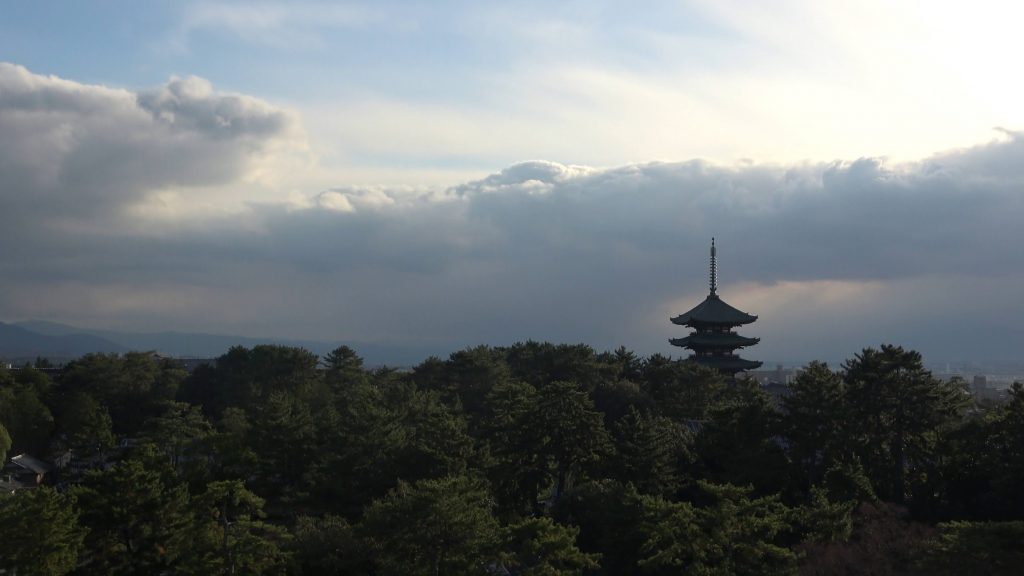
The landmark pagoda of Kofaku-ji Temple towers over the trees in the Nara Park area of Nara City.
Asuka-dera Temple in Nara is commonly credited with being the oldest Buddhist Temple (still in existence) in Japan. Other famous examples of temples include Todai-ji Temple (home of the Giant Buddha of Nara) and Kinkaku-ji Temple of Kyoto (with its famed golden pavilion and Zen garden). Buddhist deities, similar to Shinto kami, are not strictly worshiped only in officially designated temples, but can be found in many locations, such as the well-known Jizo Bodhisattva statues that often exist around graveyards and on the sides of roads, as Jizo is a deity believed to be a compassionate guide for both the dead and the living.
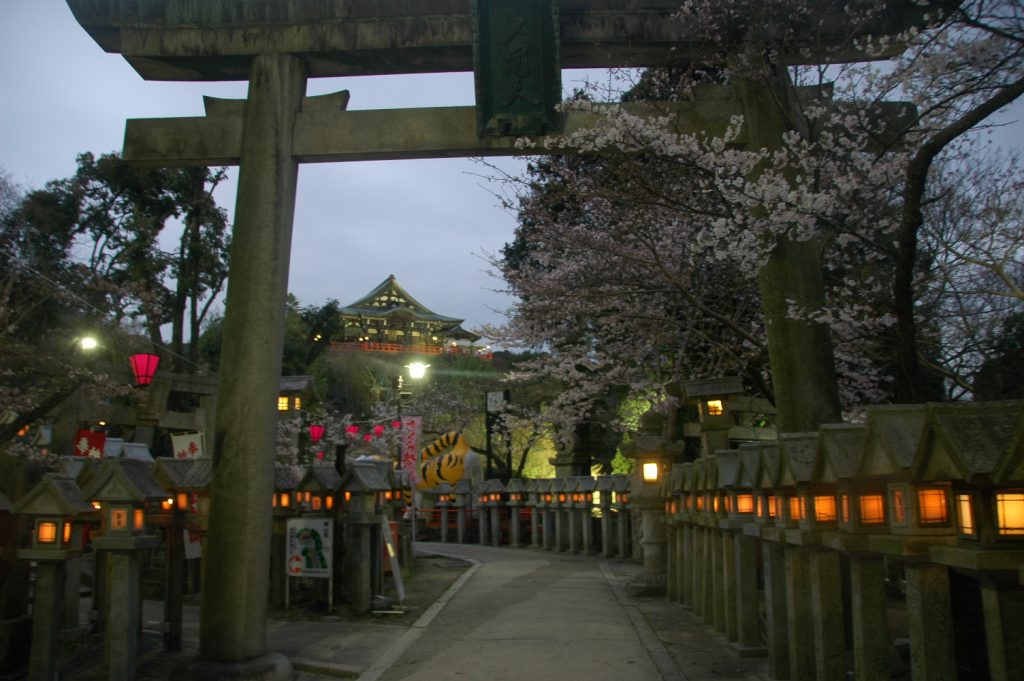
The main hall of Shigisan’s Chogosonshi-ji Temple, framed by a Shinto torii gate along one of the many winding paths through the temple complex.
Here is where things may get a bit tricky to understand. After Buddhism was introduced into Japan, a process of Buddhism and Shintoism combining into one unified system of beliefs occurred over time in Japan. How this occurred goes beyond the scope of this blog, but essentially, Buddhas and Shinto kami were both believed to exist (one did not simply erase the other) and that formed the base of religion in what is called “Shinbutsu-shugo” (“shin” = Shintoism, “butsu” = Buddhism, “shugo” = combination). This is why you sometimes see Shinto torii gates inside of Buddhist temples – because Shinto kami were recognized by Buddhist priests. This combined system of belief existed in Japan for most of its history, until the Meiji period when the government officially ordered the separation of the foreign religion of Buddhism from indigenous Shinto beliefs (termed the “Shinbutsu-bunri”), and this concept of the two being separate more-or-less remains to this day.
However, one could argue Shinbutsu-shugo very much still exists as a huge part of Japanese society and influences how people interact with both shrines and temples. For example, it is common to conduct marriage ceremonies at a Shinto shrine, while also hiring a priest from a Buddhist temple to do a funeral. Going to both shrines and temples to pray for different reasons is not usually seen as odd in Japan, and the idea that participating in Buddhism makes it the “right” religion and therefore Shinto is somehow “incorrect” (or vice versa), like you might find among believers of the different Abrahamic religions, is also not the norm.
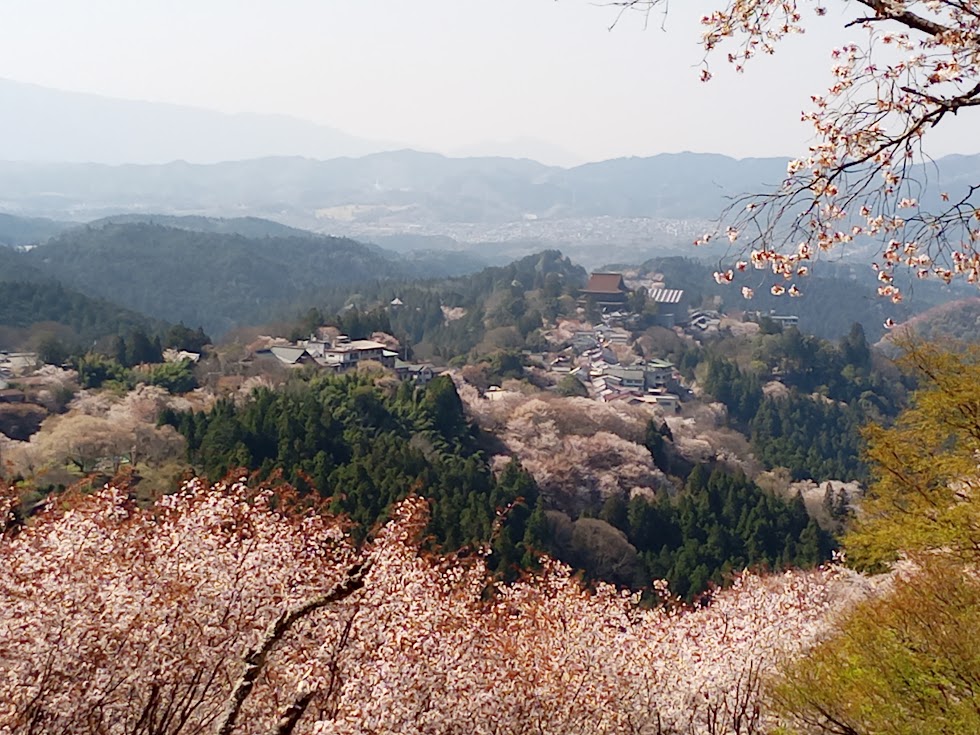
Yoshinoyama temple town in southern Nara, home to both different shrines and temples that were once part of the vast Kinpusen-ji Temple complex.
Also, what happened to all of the religious institutions that were part of the Shinbutsu-shugo system after the separation order? Well for one answer we can look at Tanzan Shrine in Nara. This was a location considered both a Buddhist temple and Shinto shrine, operating in coexistence for most of its history, which now operates as a Shinto Shrine. Despite now being a shrine, clear Buddhist architecture remains – one of its most famous sightseeing attractions is a 13 story pagoda built in the year 1532. Pagodas, though not strictly related to Buddhism worldwide, are very much associated with Buddhism in Japan, with origins rooted in the Indian stupa. Examples of pagodas and other Buddhist architecture at Shinto shrines (and shrine buildings at Buddhist temples), are not difficult to find in places like Nara, and the priests of each respective institution will often handle rites of worship for all deities enshrined therein, regardless of religious associations.

Yamabushi practitioners of the Shugendo faith at Kinpusen-ji Temple in Yoshino, Nara Prefecture.
Lastly, certain faiths also still maintain the concept of Shinbutsu-shugo as a central tenet of their beliefs, such as Shugendo mountain asceticism in the Yoshino region of southern Nara Prefecture. At the Shugendo temple of Kinpusen-ji in southern Nara, the deity Zao-gongen is enshrined as the central icon – in this case the term “gongen” refers to manifestations of Buddha in the form of indigenous Shinto kami. Yamabushi practitioners of Shugendo have a long history of operating as figures who can conduct a wide variety of religious rites in relationship with both indigenous nature deities and Buddhas.
Want to know more about all of the above? A great way to get acquainted with more of these ideas is through one of our fantastic tours of the Nara area, which explore this fascinating history in much more depth.
*Special thanks to Elizabeth for additional info on the origins of Shinto.

01
FIND YOUR FAVORITE
TRIP ON OUR WEBSITE.
SEND US AN INQUIRY.

02
PERSONALIZE THE TRIP
TO YOUR INTERESTS
WITH OUR CONSULTANT.

03
20% DEPOSIT TO CONFIRM.
BALANCE PRIOR TO ARRIVAL.
PAYMENT BY CC OR TT.

04
WE WILL
MEET YOU
AT THE AIRPORT.

05
DISCOVER THE
TREASURES!